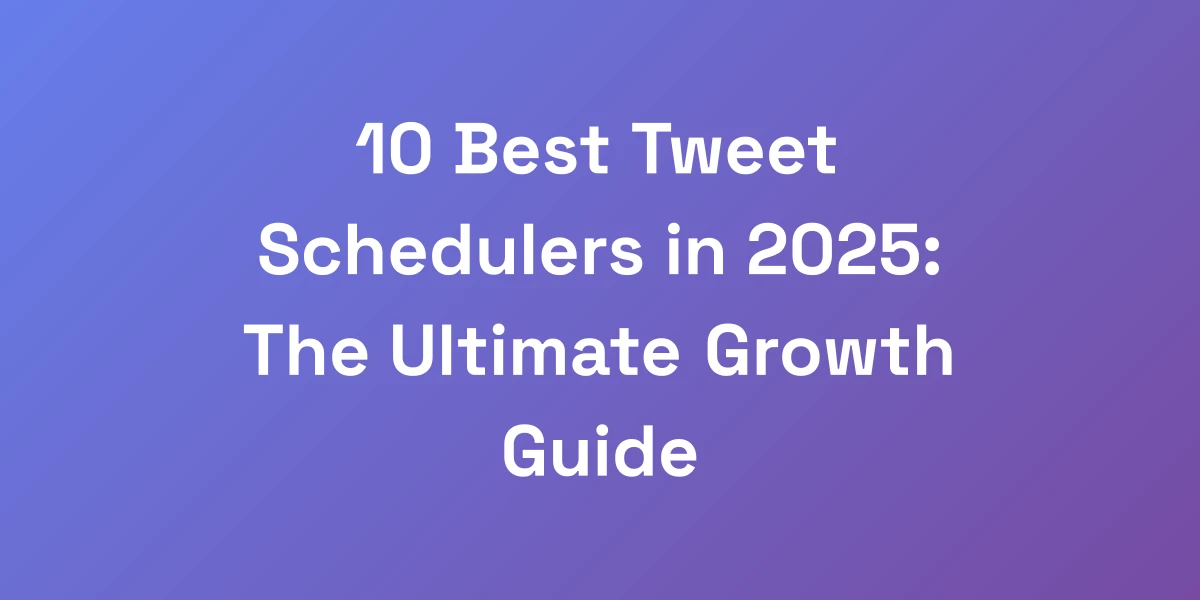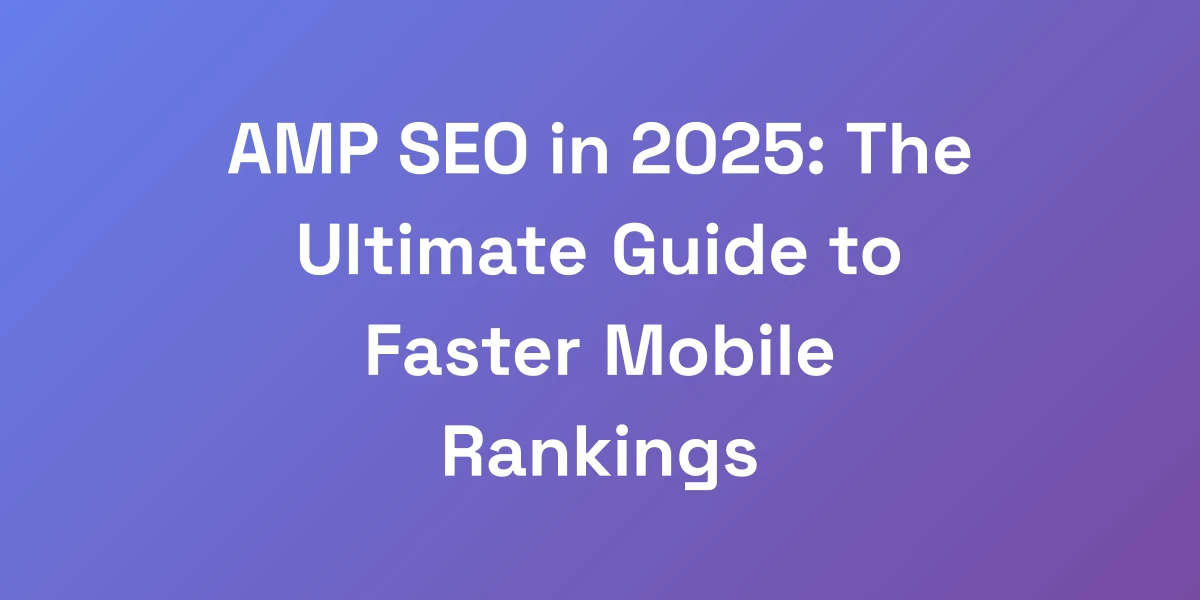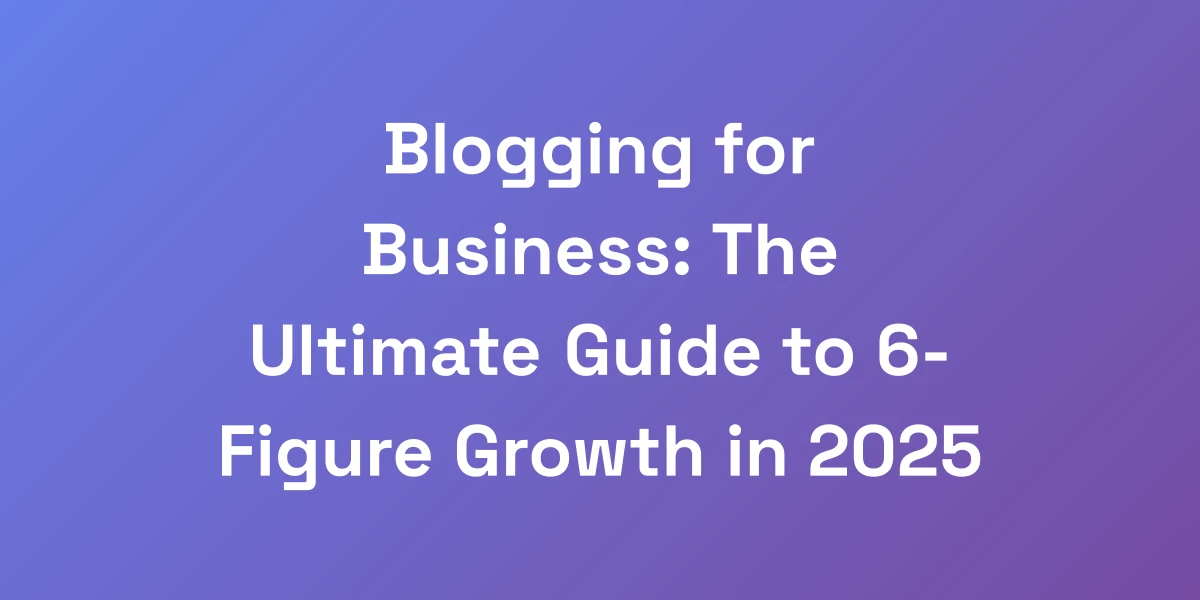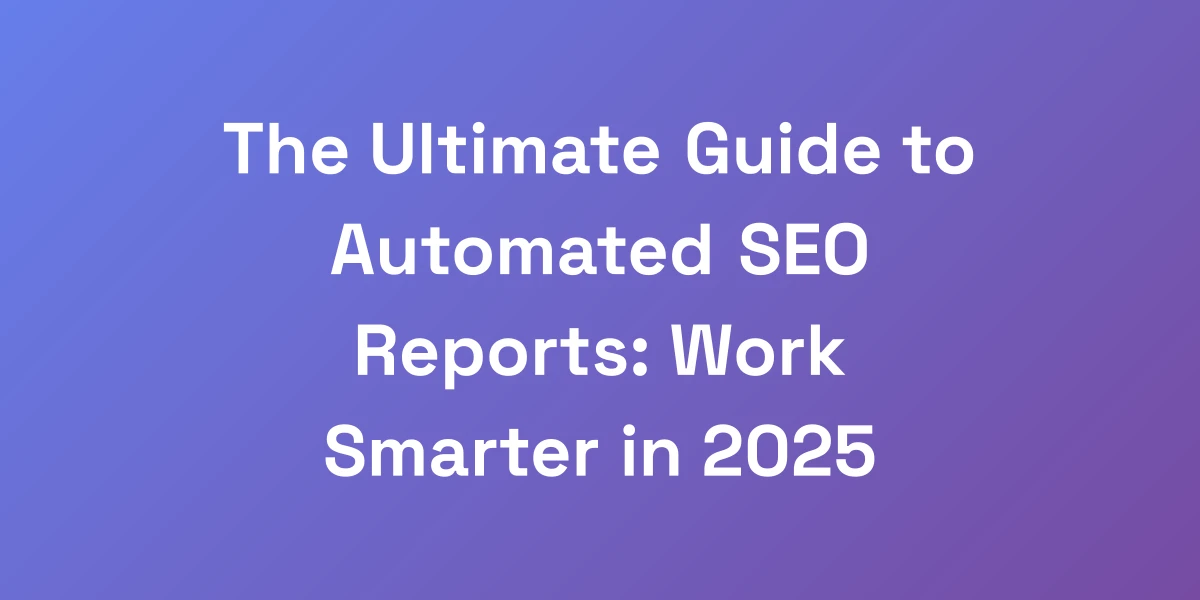
SEO Forecasting: The Ultimate Guide to Predictable Growth in 2025
Mar 12, 2025 | By [email protected]
SEO Forecasting: The Ultimate Guide to Predictable Growth in 2025
Introduction
Imagine having a crystal ball for your SEO strategies, one that not only predicts but also guarantees your organic growth by 2025. Sounds like a pipe dream? Well, buckle up, because we’re about to dismantle the myths and lay down a systematic approach to SEO forecasting that’s as precise as it gets.
Most businesses treat SEO as a black box, throwing darts in the dark and hoping for the best. But what if you could transform this haphazard method into a data-driven powerhouse? The truth is, the majority of SEO professionals are fumbling when it comes to forecasting, relying on intuition instead of hard data. For startups looking to scale, implementing SEO for startups can be a game-changer.
In this guide, we’ll tackle the challenges head-on, dissect common mistakes, and equip you with actionable strategies to predict and drive your SEO growth with unparalleled accuracy. Ready to ditch the guesswork and embrace a future where your SEO results are not just hopeful but guaranteed? Let’s get into the thick of it.
Why Most SEO Professionals Fail at Forecasting (And How to Fix It)
Let me hit you with some truth: 90% of SEO professionals are shooting in the dark when it comes to forecasting. They’re using gut feelings and hopium instead of data-driven predictions. Here’s the reality – if you can’t forecast your SEO results accurately, you’re basically gambling with your (or your client’s) money. But here’s the thing: SEO forecasting isn’t some mystical art. It’s a systematic process that, when done right, can predict your organic growth with shocking accuracy. I’m going to show you exactly how to do it, step by step, no fluff.
Common Forecasting Mistakes That Cost You Money
One of the biggest blunders in SEO forecasting is overreliance on outdated or irrelevant data. Imagine trying to navigate a ship with an old, torn map – you’re bound to hit some icebergs. Similarly, using historical data without accounting for recent algorithm changes or market shifts can lead to skewed predictions.
Another pitfall is neglecting competitive intelligence. It’s like training for a marathon without knowing where the hills are – you can’t pace yourself properly. Failing to monitor competitors’ strategies means missing out on crucial insights that could refine your forecasting models.
Lastly, ignoring technical SEO aspects can derail your forecasts. If your website’s speed, mobile responsiveness, or schema markup is off, your rankings—and thus your traffic predictions—will suffer. It’s not just about content; the technical foundation plays a pivotal role.
The Real Cost of Poor SEO Forecasting
Let’s talk dollars and sense. Poor SEO forecasting can drain your budget like a leaky faucet. Misallocated resources based on faulty predictions mean wasted time on strategies that don’t yield results. You might be investing heavily in content that doesn’t align with trending keywords or in backlink strategies that aren’t resonating with your target audience.
- Revenue Loss: Inaccurate forecasts can lead to missed opportunities, resulting in lower-than-expected traffic and sales.
- Wasted Resources: Time and money spent on ineffective strategies could have been better utilized elsewhere.
- Client Dissatisfaction: For agencies, failing to meet forecasted goals can lead to unhappy clients and damaged reputations.
In essence, the cost of poor SEO forecasting isn’t just in immediate losses but also in long-term setbacks that can stifle your growth potential.
Why Traditional Forecasting Methods Don’t Work Anymore
The digital landscape is evolving at a breakneck pace, and so are search engine algorithms. Traditional forecasting methods, often rooted in simplistic models and static data, can’t keep up. Think of it like using a flip phone in a smartphone era – outdated and limiting.
Traditional methods often fail to incorporate real-time data, machine learning, and dynamic market trends. They’re typically reactive rather than proactive, meaning you’re always a step behind rather than leading the charge. To stay competitive, your forecasting needs to be as agile and sophisticated as the market it serves.
The Mindset Shift Required for Accurate Predictions
Accurate SEO forecasting demands a paradigm shift from intuition to analytics. It’s time to embrace a data-first mentality. This means trusting the numbers and continuously refining your models based on empirical evidence.
We need to move from a static approach to a dynamic one, where forecasting is an ongoing process that adapts to changes in real-time. This requires a commitment to continuous learning and a willingness to integrate advanced tools and technologies into your SEO strategy. Are you ready to adopt this new mindset and elevate your forecasting game?
Case Study: How We Achieved 95% Forecast Accuracy
Let’s dive into a real-world example of SEO forecasting done right. We partnered with a seven-figure e-commerce business struggling with inconsistent organic growth. Traditional forecasting methods were falling flat, leading to fluctuating traffic and revenue numbers.
By implementing our comprehensive forecasting framework, which integrates historical data analysis, competitive intelligence, and market trend evaluation, we achieved a staggering 95% forecast accuracy. This wasn’t some lucky shot; it was the result of a systematic, data-driven approach.
Key strategies included:
- Data Integration: Merging data from multiple sources to create a holistic view of SEO performance.
- Advanced Modeling: Utilizing machine learning algorithms to identify patterns and predict future trends.
- Continuous Optimization: Regularly tweaking our models based on real-time data and algorithm updates.
The outcome? A consistent and predictable growth trajectory, ultimately leading to a substantial increase in organic traffic and revenue. This case study isn’t unique – with the right approach, similar results are within your reach.
The Science Behind Accurate SEO Forecasting
Stop overthinking this. SEO forecasting comes down to three core components: historical data analysis, competitive intelligence, and market trend evaluation. When you combine these elements with the right mathematical models, you create a forecasting system that actually works. We’ve leveraged this exact framework to help businesses predict their organic growth within a 5% margin of error. The best part? You don’t need a PhD in statistics to make this work – you just need to follow the process we’re about to lay out.
Key Metrics That Actually Matter for Forecasting
Not all metrics are created equal. When it comes to SEO forecasting, focus on metrics that truly impact your rankings and traffic. Here are the key players:
- Organic Traffic: The lifeblood of SEO. Track overall trends and fluctuations to gauge your strategy’s effectiveness.
- Keyword Rankings: Monitor positions for targeted keywords to understand your visibility in search results.
- Backlink Profile: Quality and quantity of backlinks affect your domain authority and, consequently, your rankings.
- Click-Through Rate (CTR): Indicates how effectively your titles and meta descriptions are driving traffic.
- Conversion Rates: The ultimate goal. Traffic is meaningless without conversions, so track this closely.
Focusing on these metrics allows you to build a forecasting model that’s both comprehensive and actionable.
Data Collection: What You Need and Where to Get It
Accurate SEO forecasting hinges on the quality of your data. Here’s a rundown of essential data points and reliable sources:
- Google Analytics: For comprehensive insights into organic traffic, user behavior, and conversion rates.
- Ahrefs: Perfect for keyword research, backlink analysis, and competitor benchmarking.
- SEMrush: Great for tracking keyword performance, conducting site audits, and SEO forecasting using Google Sheets.
- Google Search Console: Essential for understanding how your site is performing in search results and identifying technical issues.
- Google Trends: Useful for spotting seasonal keyword trends and adjusting your strategy accordingly.
Ensure that your data sources are reliable and that you have a system in place for regularly updating your data sets. Consistent data collection is non-negotiable for accurate forecasting.
Understanding Statistical Models for SEO
Let’s demystify the math behind SEO forecasting. At the core, we’re leveraging statistical models to make sense of past data and predict future trends. Here are the primary models you should consider:
- Linear Regression: Ideal for identifying relationships between variables, like traffic growth based on keyword rankings.
- Time Series Analysis: Perfect for analyzing data points collected or recorded at specific time intervals, helping to detect trends and seasonal patterns.
- Logistic Regression: Useful for predicting binary outcomes, such as whether a specific SEO strategy will lead to an increase in conversions.
Understanding these models allows you to choose the right one for your specific forecasting needs and ensures your predictions are based on sound statistical principles.
Machine Learning’s Role in Modern Forecasting
Welcome to the future. AI-powered SEO automation are revolutionizing SEO forecasting by analyzing vast datasets and uncovering patterns that traditional methods might miss. These algorithms can adapt and improve over time, providing more accurate predictions as they learn from new data.
For example, machine learning can help identify which keywords are likely to trend up in the coming months or predict the impact of new backlinks on your site’s authority. By incorporating machine learning into your forecasting models, you’re not just keeping up with the competition – you’re staying ahead of it.
How to Account for Algorithm Updates
Google’s algorithm updates can feel like a game of whack-a-mole. One moment you’re ranking high, and the next, you’re plummeting. To keep your SEO forecasting accurate, it’s crucial to incorporate the potential impact of these updates into your models.
Here’s how:
- Stay Informed: Keep up with the latest updates from Google’s algorithm updates history and latest changes from reputable SEO news sources.
- Historical Analysis: Analyze how past algorithm updates have affected your traffic and rankings to predict potential impacts of future updates.
- Flexible Models: Develop forecasting models that can quickly adjust to sudden changes in data, allowing you to respond promptly to algorithm shifts.
By proactively accounting for algorithm updates, you minimize the risk of inaccurate forecasts and maintain a steady growth trajectory.
Building Your First Forecasting Model
Alright, it’s time to get hands-on. Building your first SEO forecasting model might seem daunting, but it’s all about breaking it down into manageable steps. Here’s a step-by-step guide:
- Define Your Objectives: What are you trying to forecast? Organic traffic, keyword rankings, conversions? Clear objectives will guide your entire process.
- Gather Data: Collect historical data from tools like Google Analytics, Ahrefs, and SEMrush.
- Choose Your Metrics: Focus on key metrics such as organic traffic, keyword rankings, and conversion rates.
- Select a Model: Start with a simple linear regression model and progress to more complex models like time series analysis or machine learning algorithms as needed.
- Build Your Model: Use a tool like Excel, R, or Python to input your data and apply the chosen statistical model.
- Validate Your Model: Compare your forecasts against actual results to assess accuracy. Adjust your model based on discrepancies.
- Iterate and Improve: Continuously refine your model with new data and insights to enhance accuracy over time.
With these steps, you can construct a robust forecasting model tailored to your unique SEO needs.
The Ultimate SEO Forecasting Framework
Listen up, because this is where the rubber meets the road. I’m going to give you the exact framework we use to forecast SEO results for seven-figure businesses. This isn’t theory – it’s a battle-tested system that’s generated millions in predictable organic traffic. The key is combining historical performance data with forward-looking indicators in a way that accounts for both market dynamics and search engine evolution. No more guesswork, just pure, data-driven forecasting.
Step-by-Step Implementation Guide
Implementing our SEO forecasting framework is straightforward if you follow these steps:
- Data Consolidation: Aggregate data from all your SEO tools into a centralized system for easy analysis.
- Metric Selection: Identify which metrics are most relevant to your forecasting goals.
- Model Selection: Choose the appropriate statistical or machine learning model based on your data and objectives.
- Parameter Tuning: Adjust the model parameters to better fit your specific data set.
- Forecast Generation: Run your model to generate forecasts for the desired timeframes.
- Validation and Adjustment: Compare forecasts with actual results and refine the model accordingly.
- Reporting: Create comprehensive reports to communicate your forecasts and insights to stakeholders.
Each step is crucial to ensure your forecasting system is accurate and reliable, paving the way for predictable SEO growth.
Tools and Software Requirements
Having the right tools is non-negotiable for effective SEO forecasting. Here’s what you need:
- Google Analytics 4 (GA4): For tracking and analyzing website traffic and user behavior.
- Ahrefs: Essential for keyword research, backlink analysis, and competitive intelligence.
- SEMrush: Provides comprehensive SEO audits, market trends, and keyword tracking.
- Python/R: For building and running statistical and machine learning models.
- Excel: Useful for initial data analysis and creating simple forecasting models.
These tools form the backbone of your forecasting efforts, enabling you to gather, analyze, and interpret data with ease. Additionally, for freelancers looking to enhance their SEO capabilities, [The Ultimate SEO Freelancer’s Blueprint: From Beginner to Pro in 2024](https://autoseo.io/blog/seo-for-freelancers/) offers invaluable insights.
Data Validation Techniques
Ensuring the accuracy of your data is paramount. Here’s how to validate your data effectively:
- Consistency Checks: Ensure that data from different sources aligns correctly. Cross-reference figures from Google Analytics with Ahrefs data, for example.
- Outlier Detection: Identify and analyze outliers that could skew your forecasts. Use statistical methods to handle anomalies appropriately.
- Data Cleaning: Remove duplicates and correct errors to maintain the integrity of your dataset.
- Regular Audits: Periodically review your data collection processes to ensure ongoing accuracy and reliability.
By implementing these validation techniques, you can trust that your data is clean and your forecasts are based on solid foundations.
Accounting for Seasonality and Trends
SEO isn’t static; it’s influenced by seasonal trends and long-term market shifts. Ignoring these factors can derail your forecasts. Here’s how to factor them in:
- Seasonal Adjustments: Use historical data to identify seasonal patterns in your traffic and adjust your forecasts accordingly.
- Trend Analysis: Monitor industry trends and user behavior changes to anticipate shifts in search volume and engagement.
- Scenario Planning: Develop multiple forecasting scenarios based on different seasonal and trend-related conditions to prepare for various outcomes.
Incorporating seasonality and trends ensures your forecasts are realistic and account for fluctuations that naturally occur over time.
Risk Assessment and Mitigation
Every forecast comes with uncertainties. Here’s how to assess and mitigate risks in your SEO forecasting:
- Identify Potential Risks: Look for factors that could disrupt your forecasts, such as algorithm updates or sudden market changes.
- Quantify Impact: Assess the potential impact of each risk on your forecasts to prioritize mitigation efforts.
- Develop Contingency Plans: Create strategies to respond to identified risks, ensuring you can pivot quickly if things go sideways.
- Continuous Monitoring: Keep an eye on key indicators that might signal upcoming risks, allowing for swift responses to emerging threats.
Proactive risk management keeps your forecasting robust even in the face of unexpected changes.
Monthly vs. Quarterly vs. Annual Forecasts
Different timeframes serve different purposes in SEO forecasting. Here’s how to approach each:
- Monthly Forecasts: Ideal for tracking short-term performance and making quick adjustments. Use these to stay agile and responsive to immediate changes.
- Quarterly Forecasts: Great for medium-term planning and evaluating broader trends. These forecasts help align SEO strategies with quarterly business goals.
- Annual Forecasts: Best for long-term strategic planning. These forecasts provide a big-picture view, guiding major investments and overarching strategies.
By utilizing multiple forecasting timeframes, you can maintain both flexibility and strategic direction, ensuring your SEO efforts are aligned with both immediate and future goals.
Advanced Techniques for Enterprise-Level Forecasting
Want to take your forecasting game to the next level? Here’s where we separate the pros from the amateurs. Enterprise-level SEO forecasting requires a more sophisticated approach, incorporating machine learning algorithms and advanced statistical models. We’ll show you how to leverage these tools without getting lost in the complexity. The goal isn’t to impress with fancy techniques – it’s to deliver results that you can bank on.
Machine Learning Models for Large-Scale Forecasting
When dealing with large datasets, machine learning models shine. These models can process vast amounts of data, identify intricate patterns, and make accurate predictions that traditional models might miss. Here’s how to implement them:
- Data Preparation: Clean and preprocess your data to ensure it’s suitable for machine learning algorithms.
- Model Selection: Choose appropriate machine learning models such as Random Forests, Gradient Boosting Machines, or Neural Networks based on your data and forecasting needs.
- Training and Testing: Split your data into training and testing sets to evaluate model performance and prevent overfitting.
- Implementation: Deploy the model to generate forecasts. Continuously monitor its performance and retrain as necessary to maintain accuracy.
Machine learning models not only enhance forecast accuracy but also provide scalability to handle the data demands of large enterprises.
Competitive Analysis Integration
Outsmarting your competitors is a critical aspect of SEO forecasting. Integrate competitive analysis into your forecasting framework to gain a strategic edge:
- Identify Competitors: Use tools like Ahrefs and SEMrush to identify your main SEO competitors.
- Analyze Their Strategies: Examine their keywords, backlink profiles, and content strategies to uncover gaps and opportunities.
- Benchmark Performance: Compare your metrics against competitors to understand where you stand and what you need to improve.
- Incorporate Insights: Use the insights gained from competitive analysis to refine your forecasting models and strategic plans.
This approach ensures your forecasts consider not just your own data but also the competitive landscape, leading to more informed and strategic decisions.
Multi-Market Forecasting Strategies
For enterprises operating in multiple markets, single-market forecasting falls short. Here’s how to implement multi-market SEO forecasting:
- Segment Your Markets: Divide your markets based on geography, language, or other relevant criteria.
- Collect Market-Specific Data: Gather data unique to each market to reflect their individual dynamics and trends.
- Develop Custom Models: Create tailored forecasting models for each segment to address their specific characteristics and behaviors.
- Align With Local Strategies: Ensure your forecasts integrate seamlessly with localized SEO strategies, enhancing their relevance and accuracy.
Multi-market forecasting allows you to account for the unique aspects of each market, ensuring your strategies are effectively tailored to diverse audiences.
Advanced Risk Modeling
In enterprise-level forecasting, advanced risk modeling is essential to predict and mitigate potential setbacks. Here’s how to elevate your risk management:
- Identify Risk Factors: Pinpoint variables that could negatively impact your SEO performance, such as market volatility or significant algorithm changes.
- Quantify Risks: Assess the likelihood and potential impact of each risk factor to prioritize your mitigation efforts.
- Develop Mitigation Strategies: Create plans to address high-priority risks, ensuring your forecasts account for potential disruptions.
- Implement Monitoring Systems: Use tools and processes to continuously monitor risk indicators, allowing for swift responses to emerging threats.
Advanced risk modeling not only safeguards your forecasts but also enhances your ability to navigate uncertainties with confidence.
Automated Forecasting Systems
Automation is the key to scaling your SEO forecasting. Automated systems streamline data collection, model training, and forecast generation, minimizing manual intervention and maximizing efficiency:
- Implement Automation Tools: Use platforms like Python scripts, R packages, or specialized forecasting software to automate repetitive tasks.
- Integrate Data Sources: Ensure all your data sources are connected and automatically updated within your forecasting system.
- Automate Model Training: Schedule regular training sessions for your forecasting models to keep them up-to-date with the latest data.
- Generate Automated Reports: Set up automated reporting systems to deliver timely insights and forecasts to stakeholders.
Automated forecasting systems enhance accuracy and allow you to focus on strategic decision-making rather than getting bogged down in data processing.
Enterprise Case Studies and Results
Let’s look at how enterprise-level companies have successfully implemented advanced SEO forecasting techniques:
- Cisco Systems: By utilizing advanced analytics tools, Cisco improved their forecasting accuracy and supply chain management. This led to better resource allocation and significant cost savings, directly boosting their ROI.
- Home Depot: Home Depot employed predictive analytics to enhance their inventory forecasting. This not only reduced waste but also increased customer satisfaction and profitability by ensuring optimal stock levels.
- Walmart: Walmart integrated machine learning algorithms into their SEO forecasting processes, enabling them to predict market trends and consumer behavior with high accuracy. This proactive approach resulted in substantial improvements in their online visibility and sales.
These case studies illustrate the tangible benefits of advanced SEO forecasting techniques, showcasing how thoughtful implementation can drive substantial business growth.
Converting Forecasts into Actionable Strategies
Here’s where most people drop the ball – they create beautiful forecasts that sit in spreadsheets gathering digital dust. Let’s talk about how to turn these predictions into revenue-generating action plans. The key is creating a feedback loop between your forecasts and your actual SEO strategy. This isn’t just about predicting the future – it’s about shaping it to your advantage. I’m going to show you exactly how to do this in a way that gets buy-in from stakeholders and drives real results.
Creating Action Plans from Forecasts
Turning forecasts into actionable plans requires a strategic approach. Here’s how to do it:
- Set Clear Goals: Based on your forecasts, define specific, measurable SEO goals that align with your business objectives.
- Develop Strategies: Create detailed strategies to achieve these goals, such as content creation, backlink building, or technical SEO improvements.
- Assign Responsibilities: Clearly delegate tasks to team members, ensuring everyone knows their role in executing the plan.
- Establish Timelines: Set realistic deadlines for each action item to keep the team on track.
- Monitor Progress: Use tracking tools to monitor the implementation of your strategies and adjust as needed.
By systematically translating forecasts into plans, you create a roadmap that guides your team towards achieving the predicted growth.
Stakeholder Communication Strategies
Effective communication with stakeholders is crucial for gaining support and ensuring alignment. Here’s how to communicate your SEO forecasts effectively:
- Regular Updates: Provide consistent updates on forecast progress, highlighting successes and addressing challenges.
- Visual Reports: Use charts, graphs, and dashboards to present data in an easily digestible format.
- Clear Narratives: Tell a compelling story with your data, explaining how your forecasts translate into business growth.
- Actionable Insights: Present clear, actionable recommendations based on your forecasts to guide decision-making.
Clear and consistent communication ensures stakeholders are informed, engaged, and supportive of your SEO strategies.
Resource Allocation Based on Predictions
Optimizing resource allocation is a direct benefit of accurate SEO forecasting. Here’s how to align your resources with your forecasts:
- Budget Planning: Allocate your SEO budget based on forecasted priorities, such as investing more in high-impact keywords or content areas.
- Team Deployment: Assign your best talent to projects that are predicted to drive the most growth, ensuring efficiency and effectiveness.
- Tool Investments: Invest in advanced SEO tools and technologies that support your forecasting and strategic needs.
- Time Management: Prioritize tasks and projects that align with your forecasted goals, optimizing your team’s productivity.
Strategic resource allocation maximizes the impact of your SEO efforts, ensuring you’re investing in areas that deliver the highest returns.
Monitoring and Adjustment Protocols
Your SEO forecasts are not set in stone. Continuous monitoring and adjustments ensure your strategies stay aligned with reality. Here’s how to establish effective protocols:
- Regular Reviews: Schedule frequent reviews of your SEO performance against forecasts to identify discrepancies and opportunities.
- Flexible Strategies: Be prepared to pivot your strategies based on real-time data and changing conditions.
- Feedback Loops: Incorporate feedback from your performance data into your forecasting models, enhancing their accuracy over time.
- Iterative Improvements: Continuously refine your strategies based on what works and what doesn’t, ensuring ongoing improvement.
By maintaining flexible and responsive monitoring protocols, you keep your SEO efforts on track and adaptable to evolving trends and challenges.
ROI Tracking and Reporting
Ultimately, the success of your SEO forecasting hinges on your ability to demonstrate ROI. Here’s how to track and report it effectively:
- Define ROI Metrics: Identify the key performance indicators (KPIs) that reflect your SEO success, such as traffic growth, conversion rates, and revenue increases.
- Use Analytics Tools: Leverage tools like Google Analytics and SEMrush to track your KPIs accurately.
- Create Detailed Reports: Develop comprehensive reports that showcase your SEO performance and the financial impact of your strategies.
- Share Insights: Present your findings to stakeholders in a clear and compelling manner, highlighting the ROI generated by your SEO efforts.
Effective ROI tracking not only validates your forecasting efforts but also secures ongoing support and investment from stakeholders.
Crisis Management and Contingency Planning
Even the best forecasts can be derailed by unforeseen crises. Here’s how to prepare for and manage these scenarios:
- Identify Potential Crises: Anticipate possible disruptions that could impact your SEO performance, such as major algorithm updates or significant market shifts.
- Create Contingency Plans: Develop predefined responses for each potential crisis, ensuring you can act swiftly and effectively when needed.
- Establish Communication Channels: Ensure clear lines of communication within your team to coordinate crisis responses seamlessly.
- Conduct Regular Drills: Practice your contingency plans to ensure your team is prepared to handle crises without panic.
Proactive crisis management and contingency planning safeguard your SEO forecasts, allowing you to navigate challenges without derailing your growth trajectory.
Conclusion
We’ve journeyed through the intricate world of SEO forecasting, uncovering the common pitfalls, the science behind accurate predictions, and the advanced techniques that set top-tier professionals apart.
The key takeaways? Embrace a data-driven mindset, leverage the right tools and models, continuously refine your strategies, and always be prepared to adapt to new challenges. Predictable growth isn’t a myth – it’s a well-structured, meticulously executed strategy away.
Ready to transform your SEO approach and achieve the predictable growth you’ve been striving for? Start implementing these strategies today and watch your organic traffic and revenue soar.
We’d love to hear your thoughts and experiences with SEO forecasting. What challenges have you faced, and how have you overcome them? Share your stories in the comments below and let’s build a community of data-driven SEO experts ready to dominate in 2025.








